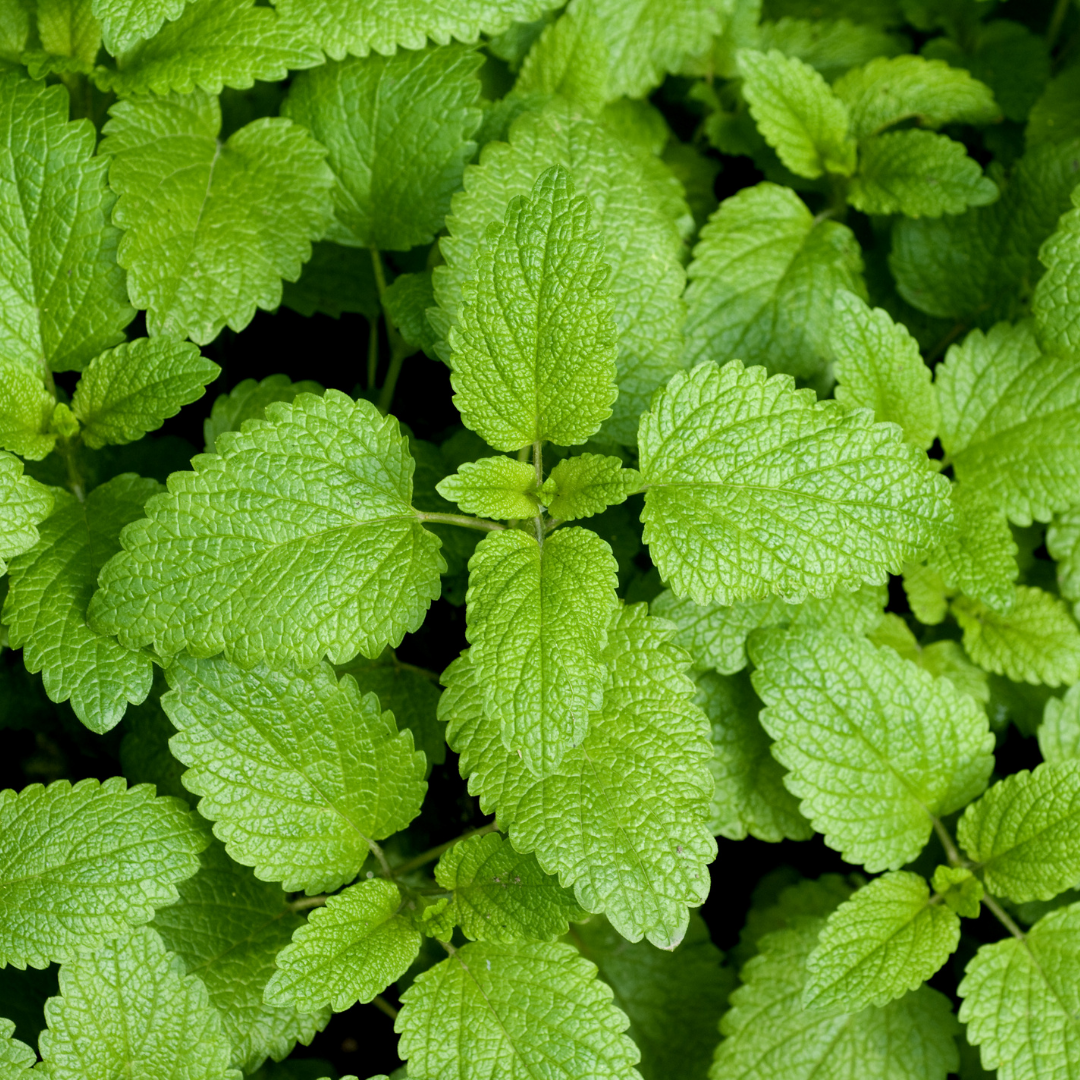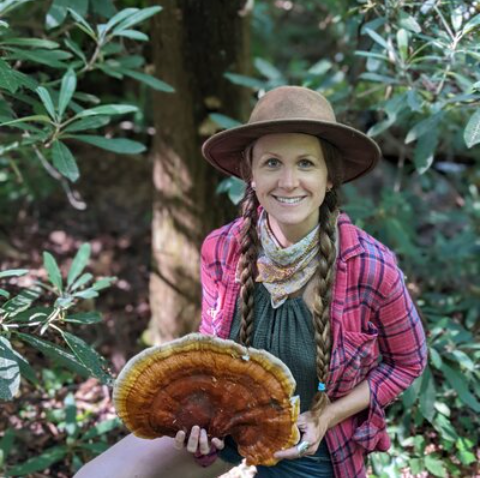Start a medicine garden to provide herbal healing to your household from your own backyard! Years ago, I started a medicine garden with just a few herbs and 16 years later, it is still growing and changing, as gardens do. I have been making safe simple medicines for my family from this garden each year since we put the first plant in the ground.
What is a Medicine Garden?
In all reality, all gardens are medicine in one way or another. Simply gazing at beauty is a medicine all in itself. Today, we’re talking about medicine in a more traditional sense. We can grow herbs that offer real medicinal benefits for us. Think of it as a blooming apothecary.
Starting your own medicinal garden is a invitation to deepen your intuitive wisdom around what your body needs. Even the process of planning the garden invites us to look at our needs and our family’s needs. When we take the step to create a medicine garden, we are stepping into our responsibility for our well-being in a physical way. When we do this, we are often rewarded with something so much deeper than a beautiful garden. We are rewarded health independence.
Planning Your Medicine Garden
Before starting a garden, you want to make sure you have the appropriate space. The herbs we are talking about today need full sun and good drainage. Lemon balm and any mints are a litle more more forgiving and can tolerate damper soil and light shade.
Also, do you want to start seeds or do you plan to purchase starts? Any hardy annual such as calendula or chamomile can be sown straight into the ground and easily grown from seed.
You might also think about your time and budget. The bigger the area, the more soil you will need if you are starting your garden from scratch.
At our farm, Wild Moon Acres, we add ground up dried leaves and even dead rotting wood from our fallen trees to back fill our raised beds. Then will fill in with soil. This saves money and as the leaves and wood decompose, nutrients are slowly added to the soil.
Your medicine garden can be any shape or size or type you would like. You can grow directly in the ground or in a raised bed; I have found that all of the herbs we talk about in this article grow well in either. As long as they have enough sun and the garden is weeded well, they will thrive.
What Herbs to Plant in Your Medicine Garden
Now for the fun part—deciding what to plant in your medicine garden. You want to ask yourself two questions:
What herbs do you already regularly use but don’t yet grow?
What ailments do you find are more common in your household? (allergies, trouble sleeping, gassiness, colds, scrapes and bruises, etc.)
The answers to these questions will point you in the direction of which herbs to grow in your Medicine Garden. To start you off with some examples of awesome herbs for the Medicine Garden, I will share some of my must have herbs and why.
Six herbs to Start Your Medicine Garden
1. Calendula. This herb grows as an annual and is incredibly easy to germinate and to keep alive. Her blooms are her medicine and the more you harvest Calendula, the more blooms she gives you! Calendula (Calendual Officinalis) can be used both internally and externally and is a very safe herb. Externally, her blooms can be infused into oil and made into a salve to heal scrapes, itchy skin or small wounds. Her soothing qualities also translate to the internal tissues, especially the throat and intestinal tract. Her blooms can be added to any tea blend to help soothe and heal the gut lining or soothe a scratchy throat. Learn how to grow calendula.

2. Chamomile. One of the most well-known herb flavors, Chamomile (Matricaria Recutita) might already be a favorite in your home. She is known for helping to soothe a tummy ache (especially for children because of her sweet flavor) and helps to calm the nervous system and help with sleep. I find that once you grow Chamomile in a garden bed, she will always come back the next year. I’ve had some return as a perennial but mostly she comes back from seed. Both the flowers and leaves may be used but the flowers hold the most medicine. Brew yourself a cup of chamomile.

3. Garlic. I couldn’t image my garden without garlic because this herb is such a powerful remedy. Garlic’s flavor is unmatched and can elevate just about any dish. The real magic comes in the medicine of this bulb. Garlic offers anti-bacterial, antiviral and antifungal properties, making her the perfect remedy for cold, flu or stomach bug. I plant my Garlic in late Fall and harvest in late June or early July. We “cure” the Garlic by handling to dry for 2 weeks and we are able to store for up to a year – just in time for the next harvest. Beware that you will most likely want to expand your Garlic crop every year. Once you have your own Garlic, it’s hard to go back to store bought. And it’s just so fun to harvest! Learn how to grow garlic.

4. Lemon balm. If ever there was a scent or flavor to brighten up a mood, it would be her. Lemon balm (Melissa Officinalis) is a perennial and will spread so wherever you plant her, she will most likely take over so allow her to have her own space. Once you begin using her though, you will be happy to have more of her. Lemon balm will bring bright lemony flavor to any herbal tea and she offers some impressive medicine. When used on a regular basis, Lemon balm can help lift a mood and even help with depression. She also has anti-viral properties so she can be helpful for viral infections. Lemon Balm begins coming up in Spring and can be harvested most of the Summer. I prefer to harvest before she flowers for the best flavor and medicine. Learn more about lemon balm and herbs which relieve anxiety.

5. Tulsi. This is another herb I simply can’t imagine my garden without. There are many varieties of this herb, but I love growing Ocimum africanum from Hudson Valley seed company. Also known as Holy Basil, Tulsi has been a sacred plant in the Hindu religion for thousands of years. Known as the Queen of herbs, Tulsi holds a title that only a few herbs in the world hold…adaptogen. This means she helps the body adapt both physically and mentally to stress. When I think of an herb to help support the adrenals, this is my favorite herb. And her scent and flavor is absolutely out of this world. In temperate areas, she is an annual but in warmer climates, Tulsi will grow as a perennial. I sow the seed mid to late Spring and enjoy her all Summer long. See how to grow basil.

6. Yarrow. One of my most used herbs in our home is Yarrow (Achillia Millefolium) A perennial, Yarrow is so easy to take care of and will come back year after year. She is so multifaceted that if you just grew Yarrow, you would cover a lot of basis as far as medicine goes. Internally, she can help move a fever along. She supports the lymphatic system, the urinary tract and even the gut. She can also help to balance the menstrual cycle. Externally, her leaves can be used to stop bleeding. I cut my finger deeply one day with a sharp knife and stopped the bleeding right away with the application of yarrow leaves. She can also be used as a mosquito repellent. Yarrow will flower in Summer. In warmer climates, she might begin flowering in late Spring. See how to grow yarrow.

Medicinal Benefits of These Six Herbs
So, let’s review what just these 6 herbs offer as medicine.
Skin healing – Calendula
Gut soothing – Calendula
Throat soothing – Calendula
Support nervous system – Chamomile
Support sleep – Chamomile
Prevent and treat cold and flu – Garlic
Emotional support – Lemon balm
Stress and adrenal support – Tulsi
Wound healing and stop bleeding – Yarrow
Fever support – Yarrow
Lymphatic support – Yarrow
Urinary support – Yarrow
Now of course, the medicine listed are simply the highlights of these herbs. Like humans, they have so many attributes and potential medicine. I encourage you to dive deeper into any herb you choose to grow to learn as much as you can – that’s part of the fun!
*** Also note that there is a potential for anyone to be allergic to a plant so if you are using an herb for the first time, pay attention to how your body feels. Always do your own research on any herb you grow or use as medicine. ***
All of the herbs I’ve talked about here bloom and offer their medicine in the summertime. We harvest and use fresh and also dry and save the herbs for year round medicine. See how to dry your own herbs for tea.
These herbs are, of course, simply suggestions. Use the two questions I provided to help guide you in what to plant in your Medicine Garden. And remember above all else, have fun!
















Comments